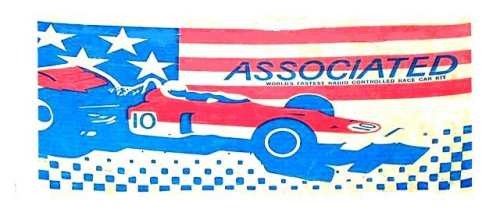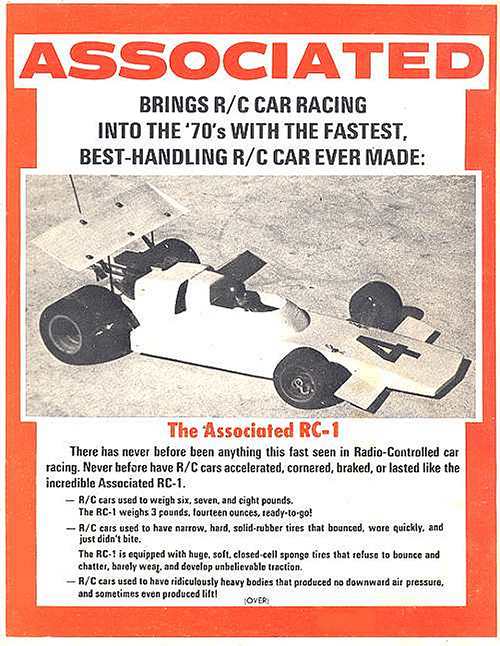

|
|
|


|
|
1/8 Scale Nitro Touring Car:
Team Associated RC1 - Radio Controlled ModelHistory and Information for the RC1:
Designed by Roger Curtis and Mike Morrisey, Team Associated released the RC1, on-road, radio controlled pan car model in 1971.
▼ Scroll Down for More Images ▼
|








|
|
|

★ Team Associated RC1 ★

★ Team Associated RC1 ★

|
Buying a Used Radio Controlled Model
|
|
Manufacturers and Brands Catalogued, Listed and Reviewed by RC-Scrapyard.
At present, the RC Model Manufacturers, Brands and Distributors covered by us are: ABC Hobby, Academy, Acme Racing, Agama Racing, Amewi, Ansmann Racing, ARRMA, Team Associated, Atomic RC, Axial, AYK, Bolink, BSD Racing, Capricorn, Carisma, Carson, Caster Racing, Cen, Corally, Custom Works, Durango, Duratrax, ECX - Electrix, Exceed RC, FG Modellsport, FS-Racing, FTX, Fujimi, Gmade, GS-Racing, Harm, HBX, Helion, Heng Long, Himoto Racing, Hirobo, Hitari, Hobao, Hong-Nor, Hot Bodies, HPI, HSP, Intech, Integy, Jamara, JQ Products, Kawada, Kyosho, Losi, LRP, Maisto, Mardave, Marui, Maverick, MCD Racing, Megatech, Mugen, New Bright, Nichimo, Nikko, Nkok, Ofna, Pro-Pulse, Protech, PTI, RC4WD, Redcat Racing, RJ-Speed, Robitronic, Schumacher, Seben, Serpent, Smartech, Sportwerks, Step-Up, Tamiya, Team-C Racing, Team Magic, Thunder Tiger, Tomy, Top Racing, Traxxas, Trinity, Tyco, Vaterra RC, Venom, VRX Racing, WLToys, X-Factory, Xmods, Xpress, Xray, XTM, Yankee RC, Yokomo, ZD Racing and Zipzaps. |
|
Hints, Tips and Information
Driving On Road
The basic driving style most commonly used for all forms of on road, tarmac and carpet racing, involves using the full width of the road available, and cutting each apex as tight as possible, whilst keeping complete control of the car on the track. The style, often referred to as "Rounding" looks quite simple to those watching, but to get it right needs good hand eye coordination and lots of practice. |
|
Hints, Tips and Information
Getting into RC
When I first got into racing RC, all I had was a three year old clapped out Tamiya Boomerang, a silver can stock motor, three step mechanical speed controller, two 1400Mah stick batteries and basic Acoms stick transmitter. |
|
RC Models:
|
Radio & Motors: |
Other
Accessories: |